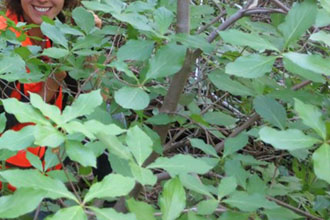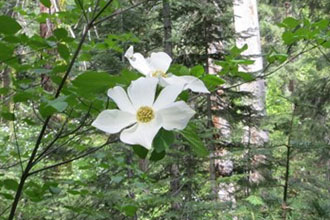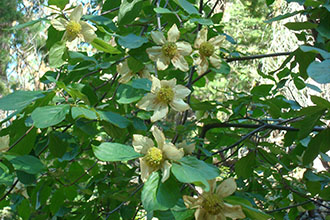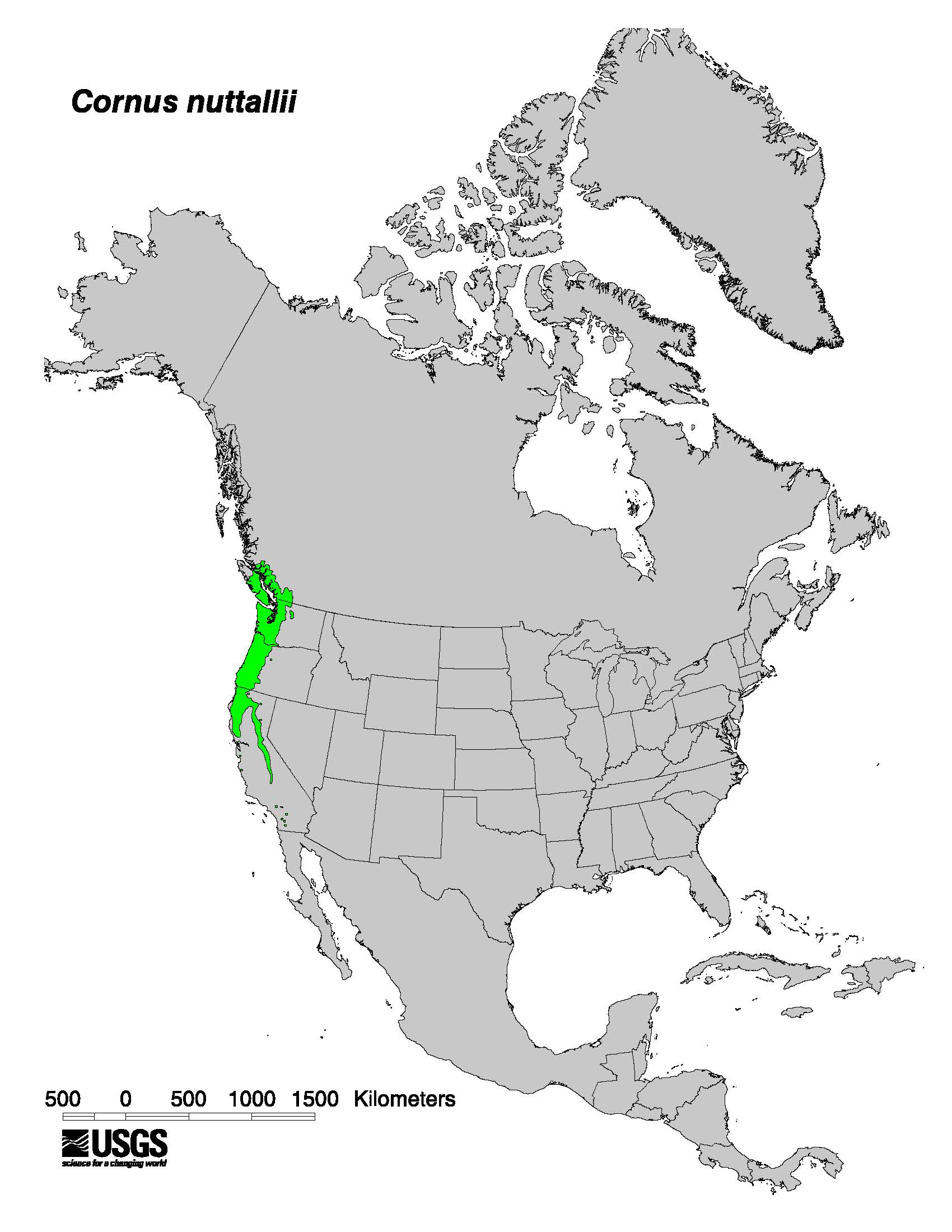Taxonomy: Kingdom - Plantae (plants). Subkingdom - Tracheobionta (vascular plants). Superdivision - Spermatophyta (seed plants). Division - Magnoliophyta (flowering plants). Class - Magnoliopsida (dicotyledons). Subclass - Rosidae. Order - Cornales. Family - Cornaceae (dogwood). Genus -Cornus L. Species - Cornus nuttallii Audubon
Ecology: Although typically considered a mesic species, Pacific dogwood is quite drought tolerant. Pacific dogwood's low frost tolerance, high flood tolerance, and moderate shade tolerance make it common along stream banks and in low-elevation coniferous, hardwood, and mixed coastal forests with temperate to mesothermal climates. Pacific dogwood can tolerate early-, mid-, and late-seral conditions...As a subcanopy species, Pacific dogwood has several shade growing adaptations. At 1/3 full sunlight, Pacific dogwood maintains maximum photosynthetic potential. Branches are self-shading; leaf petioles orient downward allowing leaves to rest on and shade the branches. Although the trunk of Pacific dogwood can be damaged by direct sunlight, established plants may initiate shoot growth from the crown to shade and protect the exposed trunk.



